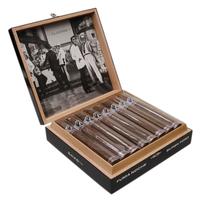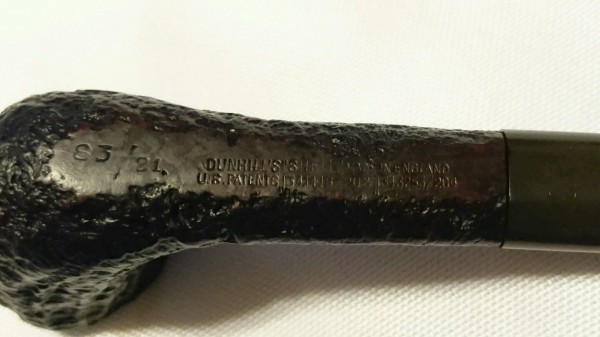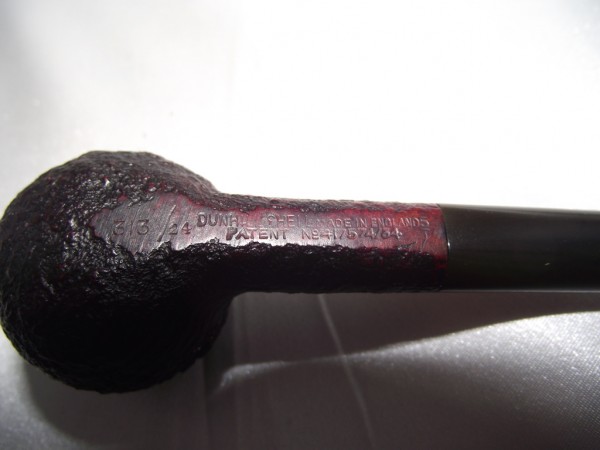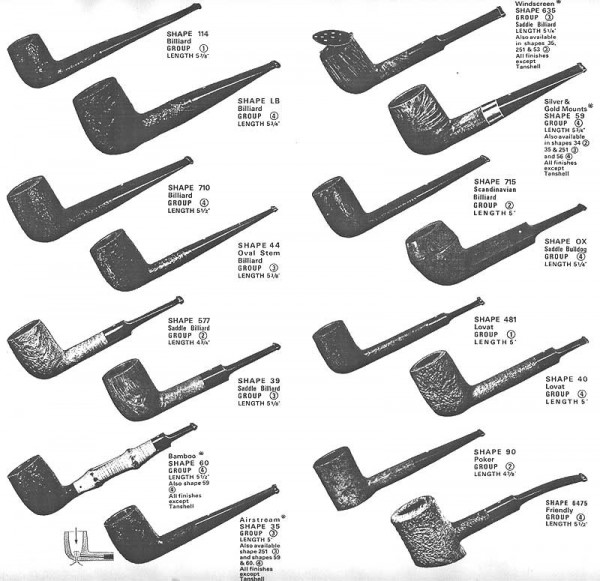Meat For the Duke Street Irregulars
- Thread starter georged
- Start date
You are using an out of date browser. It may not display this or other websites correctly.
You should upgrade or use an alternative browser.
You should upgrade or use an alternative browser.
SmokingPipes.com Updates
- Status
- Not open for further replies.
There's no date code. That's the reason I'm posting it. I think there's a chance it was made before date codes were used.So, what is the question? I can't see the date code too clearly; looks like a 9...

Sure looks like an underlined 9 after 1343253/20, no?There's no date code. That's the reason I'm posting it. I think there's a chance it was made before date codes were used.
See the link to pipephil in my first post for the same markings on a 1929 Shell.I didn't know the date numeral was ever put on the second line.
According to the late John C. Loring's book titled "The Dunhill Briar Pipe - The Patent Years and After": "From 1921 to 1931 Shells were either stamped DUNHILL'S "SHELL" if there was a MADE IN ENGLAND (or FABRICATION ANGLAISE) line, or DUNHILL'S "SHELL BRIAR" if not."
Concerning dating he states, "The date code was introduced during 1921 (most 1921 pipes do not have a date code) and pipes bearing the possessive DUNHILL'S followed by "SHELL" or "SHELL BRIAR" in quotes together with a raised underlined 1 through 0 date from 1921 to 1930 respectively."
The first patent number pertains to oil-curing and sandblasting; the second to the inner tube with flange. Mr. Loring states that this nomenclature was used in 1927.
I hope that this information is helpful.
Concerning dating he states, "The date code was introduced during 1921 (most 1921 pipes do not have a date code) and pipes bearing the possessive DUNHILL'S followed by "SHELL" or "SHELL BRIAR" in quotes together with a raised underlined 1 through 0 date from 1921 to 1930 respectively."
The first patent number pertains to oil-curing and sandblasting; the second to the inner tube with flange. Mr. Loring states that this nomenclature was used in 1927.
I hope that this information is helpful.
Concerning the 313/24 stamping, Mr. Loring states, in part, "...Shell pipes were not given specific shape numbers but rather put into one of about two and half dozen numbered categories. Since category numbers run from single digits to the twenties, while the Dunhill made shape numbers begin with 31 that can be no confusion between which system a number belongs to."
Accordingly, it seems that 313 is the shape number, and 24 the shell category number.
Accordingly, it seems that 313 is the shape number, and 24 the shell category number.
I think you are seeing the underline as the bottom of a 2.could it be a 2
Hunter, I don't think so if I'm reading Loring correctly.Accordingly, it seems that 313 is the shape number, and 24 the shell category number.
"...Shell pipes were not given specific shape numbers but rather put into one of about two and half dozen numbered categories. Since category numbers run from single digits to the twenties, while the Dunhill made shape numbers begin with 31 that can be no confusion between which system a number belongs to."
Shape 313, and as I recall the 24 referred to the specification for the inner tube for the pipe...?
However, more from Loring, so perhaps you are correct.
Hunter, after reading all this, I'm liking your explanation better.SHELL MODEL NUMBERS. While all Shell pipes began as standard Bruyere model shapes the deep sandblasting of the period meant that the resulting pipe could be far from standard. During this period and for a time after the nomenclature examples as well as catalogues seems to suggest that there was in a place a dual model number system, one number reflecting the original Bruyere model shape and the second, a single digit, reflecting a Shell category. The particulars of this apparent dual system and it’s evolution however, are unknown to me.
George, you need a better picture of that stamping.
I'm changing my mind again on the number markings on this pipe 313/24; my thinking is the 24 does refer to the Inner Tube needed for this pipe. Again from the 1938 Dunhill About Smoke,
"A Number denoting the size of the Tube required is stamped on the stem of every Pipe."
In the English pipe parlance from this period, I believe, the "Stem" refers to the shank of the pipe, and what we would now call the "Stem" is the "Mouthpiece".
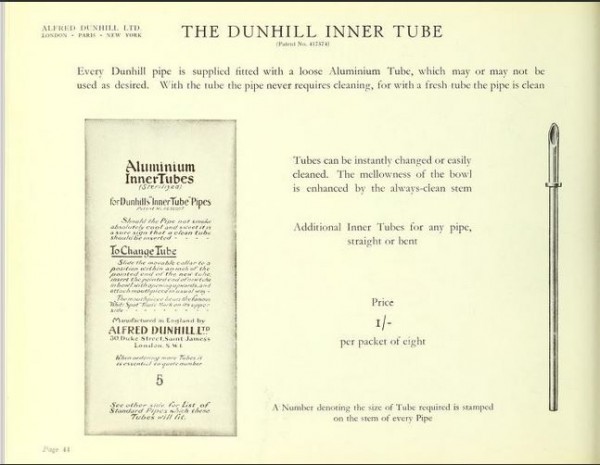
"A Number denoting the size of the Tube required is stamped on the stem of every Pipe."
In the English pipe parlance from this period, I believe, the "Stem" refers to the shank of the pipe, and what we would now call the "Stem" is the "Mouthpiece".

"With the tube, the pipe never requires cleaning"
I have to say that those tubes, when used, do keep the pipe shanks super clean.
I have to say that those tubes, when used, do keep the pipe shanks super clean.
dmcmtk:
The Dunhill Aluminum Inner Tubes package shown in your image above features a "5" which I assume refers to their length (perhaps in centimeters), as the copy states that a package contains eight tubes. If this is so, then five centimeters would equate to 1.97 inches. To test this hypothesis I just measured an inner tube from one of my Dunhill Shell billiard pipes and it is 7 centimeters long (2.76 inches), so I believe that it could be valid.
Given this, if the 24 stamped on the bottom of the pipe also refers to its inner tube length (again in centimeters), then it would equate to 9.45 inches!
The Dunhill Aluminum Inner Tubes package shown in your image above features a "5" which I assume refers to their length (perhaps in centimeters), as the copy states that a package contains eight tubes. If this is so, then five centimeters would equate to 1.97 inches. To test this hypothesis I just measured an inner tube from one of my Dunhill Shell billiard pipes and it is 7 centimeters long (2.76 inches), so I believe that it could be valid.
Given this, if the 24 stamped on the bottom of the pipe also refers to its inner tube length (again in centimeters), then it would equate to 9.45 inches!
"Were the British already using the metric system in the 1920's?"
Good point. Even if they were not, then the "5" on the package shown in dmcmtk's image might have possibly indicated that it contained inner tubes that were five inches long. If true, then does this mean that the subject pipe required 24-inch inner tubes? I will hold with Mr. Loring's suggestion that the "24" stamping indicated a category number.
Good point. Even if they were not, then the "5" on the package shown in dmcmtk's image might have possibly indicated that it contained inner tubes that were five inches long. If true, then does this mean that the subject pipe required 24-inch inner tubes? I will hold with Mr. Loring's suggestion that the "24" stamping indicated a category number.
- Status
- Not open for further replies.



